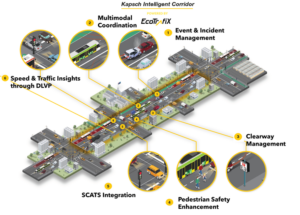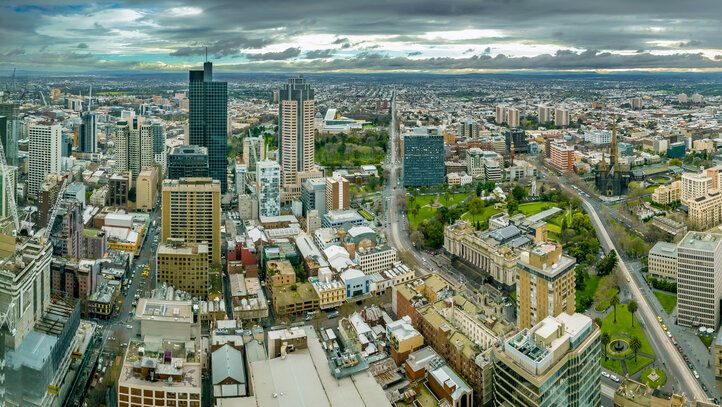Today (Tuesday September 20) at the ITS World Congress in LA, David Bolt, vice president of sales and solution consulting for the APAC region at Kapsch TrafficCom, will provide an update on how the Kapsch and AIMES Intelligent Corridor project in Australia is going and explain six defined use cases focused on congestion management and improving road safety.
The session entitled Intelligent Corridors for Effective Network Demand Management will take place from 3pm till 4:30pm in Room 406A at the Los Angeles Convention Center.
The project was launched by Kapsch TrafficCom in March of this year together with the University of Melbourne and the Victorian Department of Transport (DOTVic) supported by an AU$2m Australian Research Council (ARC) Linkage grant from the federal government.
“Our idea is to use new and existing technology to provide effective “change levers” to traffic operators, improving the transport network and the surrounding environment for all traffic participants,” says Bolt.
 Covering a 2.5km stretch of Nicholson Street between Alexandra and Victoria Parades in Melbourne, the Intelligent Corridor uses sensors, cloud-based AI, machine learning algorithms, predictive models, and real time-data capture to improve traffic management – easing congestion, improving road safety for cars, pedestrians, and cyclists, and reducing emissions from clogged traffic.
Covering a 2.5km stretch of Nicholson Street between Alexandra and Victoria Parades in Melbourne, the Intelligent Corridor uses sensors, cloud-based AI, machine learning algorithms, predictive models, and real time-data capture to improve traffic management – easing congestion, improving road safety for cars, pedestrians, and cyclists, and reducing emissions from clogged traffic.
The Intelligent Corridor marks a significant new phase, providing a new level of monitoring, with sensors on every intersection and a host of initiatives that will create a world-leading traffic management system.
“The challenge is turning the mountain of data that is available into usable information. Our task is connecting the right data and focusing on usable outcomes to enable and inform operators. Based on those outcomes, several use cases can be identified that are actively impacting traffic participants,” Bolt continued.
The Kapsch Intelligent Corridor is part of the AIMES (Australian Integrated Multimodal EcoSystem) network. AIMES is the world’s first and largest ecosystem for testing emerging connected transport technologies at large scale in complex urban environments. It incorporates over 100km of road network in Melbourne and receives support from the Victorian Department of Transport.




